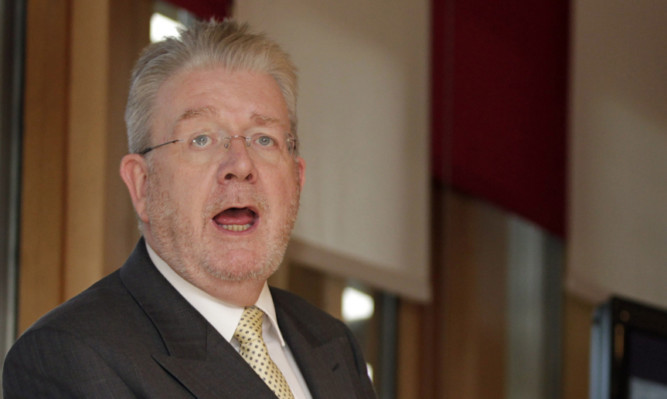Nothing good seems to have emerged from the SNP’s programme of college mergers, which has decimated this once valued sector of Scottish further education.
More grim headlines this week announced that staff morale was at rock bottom, trust in management was at an all-time low and money had again been squandered on six-figure payouts for college bosses.
The government, with breathtaking complacency, responded by saying “we’ve improved the learner experience” but there are not that many learners left and ministers can no longer sweep this debacle under the carpet.
Two reports out in the last couple of days one by the public audit committee and the other by the union Unison condemned the way the Scottish Government has handled this alleged reform.
The audit committee of MSPs said it was “appalled” at severance packages of £500,000 shared between two members of staff at what was North Glasgow College and £850,000 for departing heads at the former Coatbridge College in Lanarkshire. John Doyle, the former principal of Coatbridge, alone received £304,000.
Staff colluded to “feather their own nests” and deliberately withheld Scottish Funding Council advice which called the payments into question.
Tragedy
Tragically, the suicide of a former faculty director at Coatbridge is linked, his family believe, to the stress caused by what the committee called “moral corruption”.
Francis McGeachie committed suicide in 2013 at the time the college was merging with others to create New College Lanarkshire. He had expressed concerns about “excessive” payments to staff, although he had not received any himself.
And as if all that wasn’t bad enough, the £50 million savings the SNP promised don’t appear to have materialised.
Labour MSP Paul Martin, convenor or the public audit committee, said: “It is disappointing that the Scottish Government and Scottish Funding Council have not yet been able to provide detailed figures to demonstrate efficiencies.
“The £50 million figure for savings has frequently been referred to but we have yet to be convinced.”
In a separate report, Unison found 90% of college staff think the sector is underfunded, more than 60% think services have declined and almost 70% say this is due to the Scottish Government’s merger policy.
The report, called Learning the Hard Way, also found that 80% doubt services will improve within the next year and 70% are unhappy with opportunities for their own career advancement.
Cut in places
But worst of all, the creation of the regional “super colleges” has been at the expense of Scotland’s youngsters. The Labour leader Jeremy Corbyn was right to attack the SNP’s record in government, saying they had actually cut the number of college places traditionally taken up by school leavers not destined for university.
Since 2009, the number of college students has fallen 36% , not to mention the thousands of staff jobs that have gone. What has become of all those young people who would have attended vocational courses or carried on in education had they been given the opportunity?
The SNP makes much about its free university tuition but with children from advantaged backgrounds about 10 times more likely to go to higher education than their less privileged peers, the Nationalists are allocating funding where it is least needed.
School leavers who might have attended college as a bridge to university are now less likely to do so. And thousands of those who never entertained an academic future are now denied the alternative of acquiring trade skills.
While the streamlining of colleges, from 37 to 20 has no doubt trimmed some courses from syllabuses that served no useful purpose, it is inconceivable that so many places can be cut without a knock-on effect on the current generation.
Best-forgotten minister
The SNP is reaping the consequences of an ill-thought-out education agenda devised by one of its best-forgotten education ministers. If Mike Russell had been honest when he forced through his unpopular measures on the sector and spelled out the government’s intention to switch resources from colleges to universities, at least educationalists could have had a constructive debate.
But desperate to find money to fund free university tuition, he talked about “wasteful duplication” and prioritised budgets over the social implications of his rationalisation process.
Two concerned former college principals wrote to Russell in 2013, pointing out their sector had suffered a 40% funding cut over four years, while the government had been able to “magic up” an extra £30m for postgraduate education,
They claimed the removal of local provision would “discourage the most excluded, least confident learners from participating in post-school education”.
Russell is long gone from that ministerial brief but the issue remains. Will his successor now atone for his lack of transparency by conceding the policy has failed?
